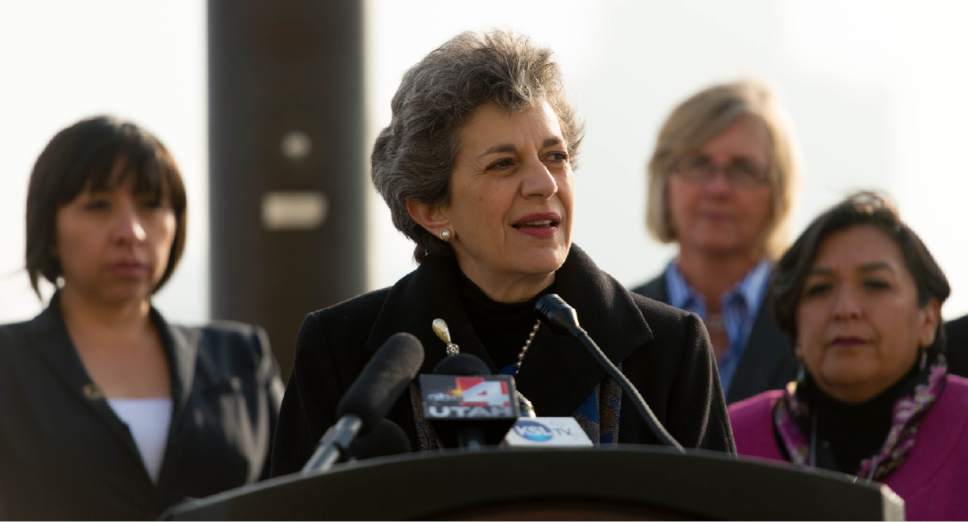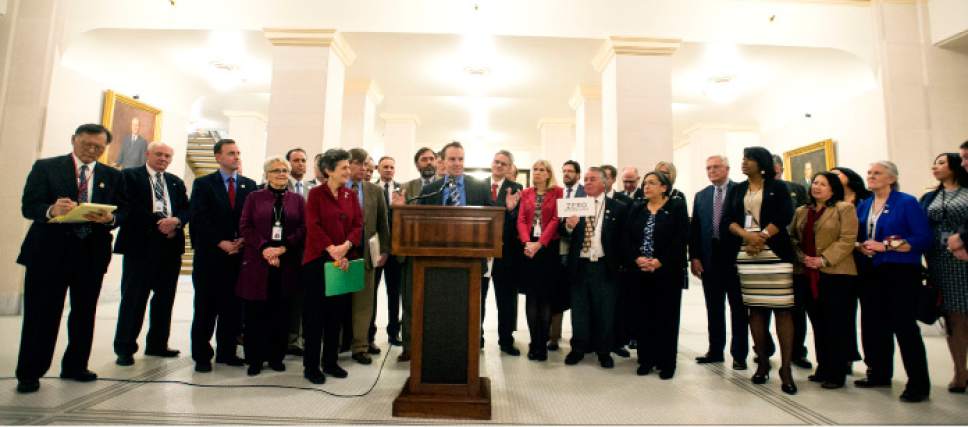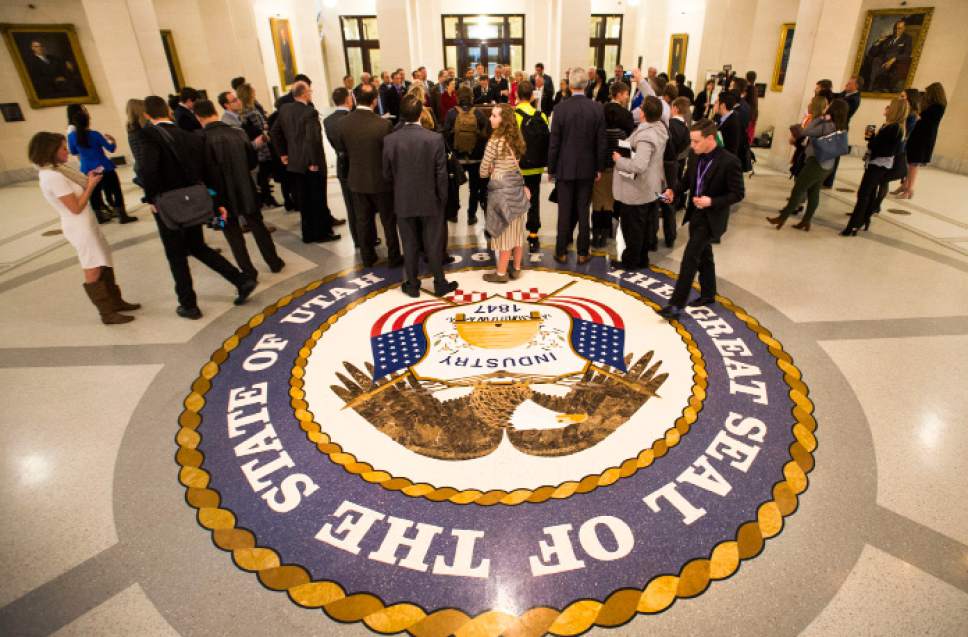This is an archived article that was published on sltrib.com in 2017, and information in the article may be outdated. It is provided only for personal research purposes and may not be reprinted.
When Gov. Gary Herbert walked out on the steps of the Capitol on Thursday, he couldn't see his shadow, which means we have five more weeks of the Legislature.
Frankly, it's hard to see much of anything from the Capitol steps these days, with the annual murky haze settling in over the valley, burning the lungs and stinging the eyes as we all were subjected to breathing the worst air in the nation.
With President Donald Trump's administration looking like it plans to gut the Environmental Protection Agency, it's time for state leaders who have for years said the state can solve its problems better than the federal government to start walking the walk.
Victories on air-quality measures have been lurching and incremental, but the state does have some progress to show. As the governor noted in his State of the State address, despite the 600,000 new residents in the state between 2002 and 2014, total emissions dropped by 30 percent.
But that's small consolation on days like the last few, when the air tastes like the inside of Gordon Hayward's Nikes (I would imagine. I haven't actually tried them for myself).
"It's never enough. There's always more we can do," said Rep. Patrice Arent. "This is important. We've seen a lot of studies lately about the impact on our health. This is a big deal. It's a big deal to people thinking about moving their business here, bringing their families here."
The typical flood of air-quality bills are working through the Legislature, but their fate, as in the past, will depend on how much clean air is worth to lawmakers.
That would mean passing bills like HB29, Rep. Stephen Handy's bill that would renew a $1,500 tax credit for the purchase of electric vehicles. The credit was first adopted in 2008 and, since then, Utah has become one of the top 10 adopters of electric vehicles. It lapsed at the end of last year and Handy's bill would renew it and extend the program through 2021.
Handy also, once again, is proposing a state program aimed at updating and replacing the fleet of dirty school buses. The bill passed the Legislature last year, but didn't get funding.
Arent wants the counties that currently don't test diesel vehicles to be required to start doing those emissions tests.
Arent also has legislation that would devote $1.3 million toward replacing outdated air monitors that are on the verge of breaking down. Another program that didn't get funded last year.
And a bill sponsored by Rep. Jeremy Peterson, R-Ogden, that started out as an attempt to repeal a tax credit for rooftop solar panels, has morphed into an extension of the program in its latest version, with a phase-out provision over the next several years.
Another rooftop solar bill — still being drafted by Sen. Lincoln Fillmore — is expected to prohibit homeowner associations from banning rooftop solar in their subdivisions.
One of the obstacles air advocates and lawmakers are running into is that the air-quality legislation is being pitted against public-education funding, since the tax credits for the clean energy and vehicle programs would come out of the money available for public schools.
Handy's bill, for example, would drain about $1 million annually out of the education fund. It's still unclear how much Peterson's bill would cost.
So apparently you have to choose: Your kid can get a mediocre education or he can breathe unhealthy air.
Lawmakers surely can find a better way than pitting two of the public's top priorities against each other.
There is, perhaps, a little bit of wiggle room this year. Utah is scheduled to receive about $32 million from the settlement with Volkswagen over the car makers' rigging of diesel emissions tests. That money, under the terms of the settlement, has to be used for air quality programs. It is, for example, where Handy is hoping to get money for his school-bus program.
But it will take more than a few extra millions to make sure legislators stay focused on improving air quality.
Like the movie "Groundhog Day," it seems like every legislative session, the bad air rolls in and stays for the first few weeks, and lawmakers feel the pressure to respond. Then midway through, the storms clear out and the sun shines and lawmakers move on to other concerns.
So it will be up to the public — some of those thousands of protesters that filled the Capitol two weeks ago, looking to make a difference — to stay involved and keep the heat on lawmakers until the 45th day.
Twitter: @RobertGehrke











